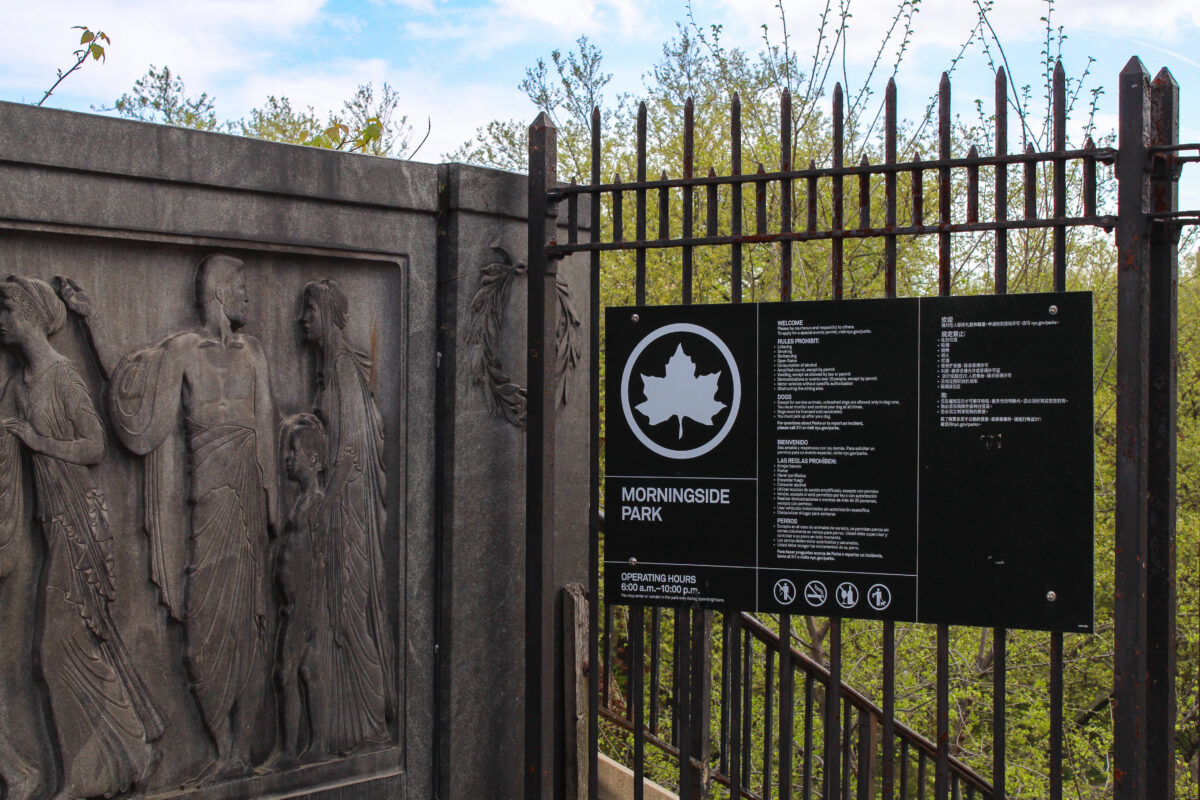I never got a chance to tour Barnard prior to submitting my application, but I distinctly remember exploring Morningside Heights via Google Maps to compensate. From a bird’s-eye view, everything seemed idyllic: a cozy campus next to Columbia’s Low Steps, a Shake Shack and Sweetgreen nearly adjacent to each other, and not one, not two, but three parks within a one mile radius. I thought that despite their distinct locations, every park would boil down to being some sort of green space where one could exercise, read a book, or hang out with friends. I was familiar with Central Park because of movies like When Harry Met Sally, so I figured Riverside and Morningside couldn’t be too different. Now that I am here, though, I’ve realized the largest difference between these three parks isn’t topography, but rather stigma.
As I arrived on campus, I quickly learned that Central Park does, in fact, have the reputation of being Manhattan’s oasis, a green getaway amidst all the chaos. Meanwhile, Riverside is chill, less popular than Central but still quite active, as it offers a great space to exercise and appreciate the water. But Morningside… don’t go there. It’s dangerous. It’s sketchy. Who knows what could happen to you? Among the whispers and the side-eyes, I couldn’t help but wonder what the big deal was. Along with warnings against this park, I received both formal and informal suggestions that I avoid late-night strolls, be aware of my surroundings, and never go there unaccompanied. I nodded along because of course, I would never go to any park alone at three in the morning wearing headphones, but that wasn’t the point of these conversations. The subtext then, and still now, is that something specific to Morningside Park makes it a justifiably scarier, more threatening and more dangerous park than the other two; the larger implication of this train of thought is that gentrification and violence against the people in this area is valid, or at least understandable.
Rhetoric about danger in Morningside Park has been used since the 1950s to delineate the boundaries of where our Ivy League prestige ends and “a spreading slum” begins. In 2011, the New York Times called Morningside “a haven for drug addicts” and “a no man’s land,” such that the predominantly Latino and Black area has been subjected to a myriad of criticism that has established a stigma against it. As Americans continue to link people of color with “crime, violence, disorder, welfare, and undesirability as neighbors,” this stigma grows and actually reinforces the very disadvantages it seeks to point out.

On the other hand, there’s no denying the precedent of criminality in Morningside Park. There were three instances of robbery in the last quarter of 2022 alone, and most poignantly, the death of Barnard first-year Tessa Majors in 2019 shattered the sense of safety Morningside had been trying to construct. Barnard students, a population composed of women and gender nonconforming people, are forced to think about their safety on and around campus every day. But when we look at the larger picture, we cannot let stigma against people of color go unnoticed under the pretense that our safety is being compromised. We must recognize that Columbia University’s power as an institution, and our role as students being an extension of that power, presents us with an obligation to stand with a community we have subjected to gentrification and neglect. Take the aftermath of Majors’s death: the Black Student Organization accurately pointed out how that many Barnard faculty members received phone calls from a white supremacist organization called “Road to Power” which “blamed Tessa’s death on her proximity to Black people, stating: “Remember to teach your children: Around Blacks, never relax.” How can we look at this instance of blatant racism and stigma but not put into question how each of us contribute to the perception of why Black and Latino people are stigmatized in this way?
To hold Morningside Park, and Harlem, to a stricter standard about safety than other areas of New York perpetuates an unfair notion of racialised bias that licenses violence against Black and Latinx communities. Even if the intent is not to stigmatize, when solely focusing on the dangers of Morningside Park and Harlem without contextualizing the larger safety issues of New York, the narrative about how communities of color ought to be treated is reinforced– particularly as it pertains to solidifying the social structure of public spaces as tied to race and class.
Photographs by Samantha Candelo Ortegon

